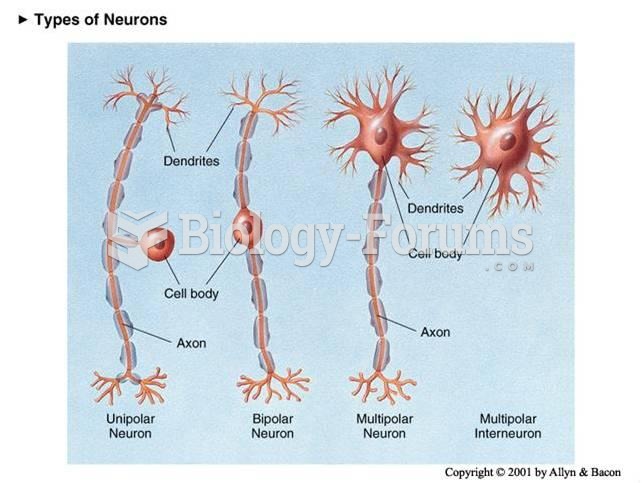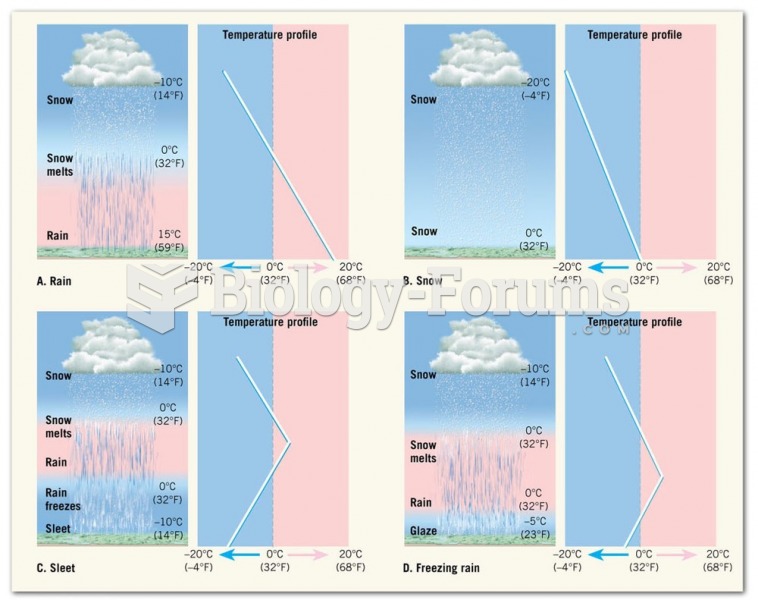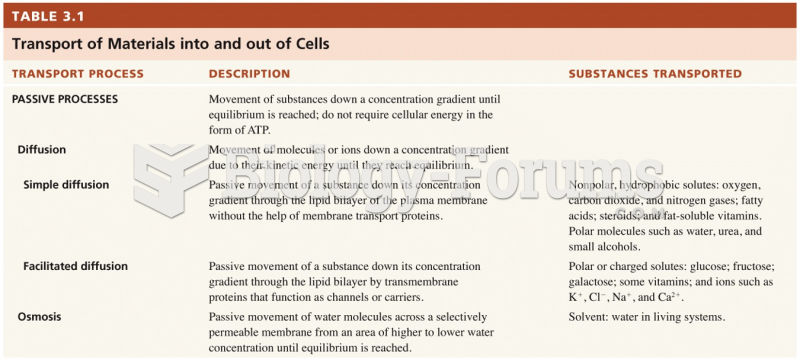Answer to Question 1
Answer: Precipitation occurs when air rises sufficiently to cause condensation. There are four types of conditions that cause air to rise: convection, orographic uplift, convergence, and fronts.
Convectional precipitation: Convectional storms are responsible for a large portion of the world's precipitation. In tropical climates, where strong insolation makes temperatures high, all that is needed for intense daily convectional storms is a source of humidity. In midlatitude climates, such storms occur mostly in the summer because higher temperatures allow the air to hold more moisture, and this means more latent heat can be released, causing strong convection.
Orographic uplift: When winds move air against a mountain range, the air is forced to rise as it passes over the mountain. As the air rises, it cools adiabatically. The cooling causes condensation, and precipitation results. This type of rainfall is called orographic rainfall. Descending air on the other side of the mountain, called the leeward side, is usually accompanied by a drop in the relative humidity. The leeward side of a mountain range is often much drier than the rainy windward side.
Convergent precipitation: Within greater storm systems, large areas of low pressure form, drawing in air from surrounding areas. This rising air causes precipitation. Such regions of low pressure and precipitation usually move, guided by large-scale circulation patterns.
Frontal precipitation: This type of precipitation forms along the boundary between two air masses, also called a front. In North America, air masses that form over central Canada, which tend to be cool and dry sometimes come in contact with air masses that form over tropical water, such as over the Gulf of Mexico, which tend to be warm and moist. At the front the cooler air is relatively dense, and therefore moves under the less dense warm air, while warm air tends to rise over cool air. The rising then cool, condenses and precipitation occurs.
Answer to Question 2
Answer: El Nio is a circulation change in the eastern tropical Pacific Ocean, from westward flow to eastward flow, that occurs every few years. The Spanish term which literally means the (male) child, is a reference to the Christ child, because the phenomenon occurs around Christmastime. During an El Nio event, the usual cool flow from South America westward is slowed and sometimes reversed, replaced by a warm-water flow from the central Pacific eastward.
The counterpart of El Nio, in which especially cool waters are found in this region, is known as La Nia, or the female child. Typically, the ocean current off South America's western coast is cold and nutrient-rich, owing to upwelling (the bringing of cold waters from the ocean depths). During La Nia events, this pattern is reinforced so that additional cold waters are added to the ocean surface. The result may be especially dry conditions in Chile and Peru's coastal deserts.
El Nio events are far reaching because a modification of circulation in one part of the globe may cause circulation patterns to change elsewhere in North and South America and the Pacific region. For example, El Nio events are linked to flooding in the U.S. Southwest, droughts in Australia, and reduced rainfall in India. La Nia events often bring wet weather in south and Southeast Asia, and dry conditions in the southern United States.







